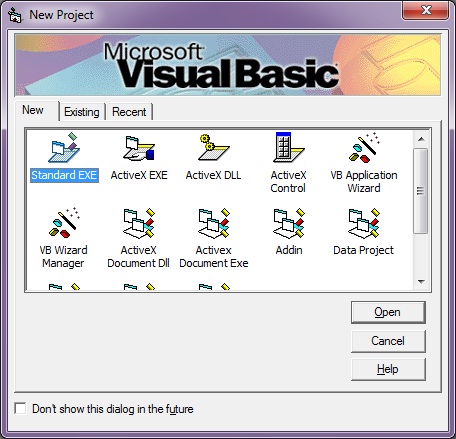Virus Visual Basic 2010

Jul 29, 2012. I formatted my C: drive and re-installed windows along with VS 2010 and all other software, but that did not solve the problem, i did not realize that my PC is infected with Virus [Win32.Sality] until i used a flash USB memory that acting a little bit weird for instance, it was opening in new window and that my. First of all open a new Visual Basic project, a standard exe file. Now it depends on how you want your virus to work, I feel it is best if it is activated once your application is opened so the main code codes in the form load sub. On your project insert a text box, a command button and a timer, we will be using.

Thank you for the stateofidlenes. Even if i read the file as a hex. I do not know what to look for. I do not difference between computer virus and normal file.
That's the hard part. P.s I also read that i could setup a virtual machine, and infect it with a known virus, and read its hex. Get the byte length, and get a sample signature. But one problem, i still would not know how to tell the difference virus and normal file. I think that I'm more curious of telling the difference between a normal file and virus. I mean virus file most have some different behavior code then a normal file.
That's the point of your virus signatures. Most well-known AV apps (norton, avast, etc) maintain signature databases or some other way to maintain known virus signatures (this is why you have to update your virus definitions every so often).
How they get these signatures, I don't know. User-submitted possibly, or they have test environments where they 'infect' a host to get the signature. Install Bmw Tis Software.
But once they have the signature(s), you simply store them somehow (db, text file, other format). Thank you for the reply. If i was to open a virtual machine infect it with a virus, and extract specific sig and store it database then it would be called a 'real anti-virus'. The problem again is that i have no clue on how to tell if a file is a virus or not. I mean a virus most have different behavior then normal file right?
The virus must have some obvious activity that makes it easy for anti-virus company to catch. I heard they have automated system that tags files as viruses. So it can't be that hard to just identify one file as a virus. Any ideas on how they work?
Any suggestions are welcomed. I don't know much about virusses, but I guess the easy way to check if a file is a virus is to use the signature you mention. If you found a virus, by whatever way (not with your application) and somehow identify it's 'signature' (I've no clue what that is by the way), then you can check any arbitrary file if it has that same signature.
If it does, it's a virus. If it doesn't, well you really don't know. It could be a clean file, but it could also be a virus which signature you don't know (yet). I'm pretty sure AV programs detect viruses in many ways, so that they don't require a signature for every virus imaginable, but I have absolutely no clue why you think that that is an easy task. I would think it is an extremely complex process and you should probably know every little detail about the windows filesystem to even understand a bit of it. Hp Psc 1501 Drivers here. I'm sorry, but I'm pretty sure you can't do this.
I certainly know I couldn't. EDIT Furthermore, I know you don't want to hear this, but I doubt it would be possible at all with VB.NET. You would likely need to go down to a very deep level of control and.NET applications simply don't have that much control over the operating system. I doubt anything else than C could do it, and I wouldn't be surprised at all if the scanning process of many AV programs is written in assembly or something. You have to have different 'patterns' or 'criteria' for distinguishing a file/app as a virus. This is why some applications/files are deemed 'malicious' when they are not. They obviously met some criteria that the AV defined and threw up the red flag.
You will need to define these criteria yourself, whether they be 'trying to access a specific part of the filesystem', or 'editing the registry', whatever. Once you have done that, you would need to 'intercept' that call and block it or prompt the user. This needs to be done in a language that is capable of 'listening' at a very low OS level (*cough* not VB) sure, you can make an AV in VB, but not one I would use. (to be blunt) it's just a matter of fact that VB is not designed for this kind of interaction with the OS/Hardware that you are wanting, at the level of effort required would be far too great that it would be pointless. • → *new* Get practical advice and learn best practices for moving your applications from RDBMS to the Couchbase Engagement Database.
(sponsored) • → Learn to shorten database dev cycles, integrate code quality reviews into Continuous Integration workflow, and deliver code 40% faster. (sponsored) • → See a demo showing how you can build a globally distributed, planet-scale apps in minutes with Azure Cosmos DB. (sponsored webinar) • → A complete overview of Cloud Computing focused on what you need to know, from selecting a platform to choosing a cloud vendor.
• → Better understand the signs that your business has outgrown its current database. (sponsored webinar).
Click Here to Expand Forum to Full Width Survey posted by VBForums.